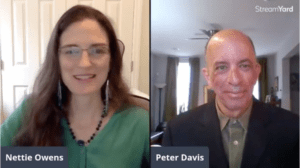How long do you think things are going to take to go back to normal for doctors’ practices?
The most important thing to understand right now is that this pandemic has acted as a catalyst. We’re going to look back at this, and we’re going to remember how things were before COVID and after COVID. And there’s going to be a very clear distinction between the before and the after.
I don’t think we’re ever going back to “normal.” We will eventually be developing a “new normal” that we will get used to. But things won’t go back to being the same.
Think about 9/11, for instance. We never went back to how things were before, in terms of travel, for example. Now we have all these new security measures that we’ve gotten used to over the last 20 years. But these didn’t exist before, and it’s going to be very similar after the pandemic.
There are lots of doctors that are just waiting to weather the storm and then hoping that things will go back to normal. But this will not be the case. They need to be making changes in their practices, and it goes beyond just offering zoom video consultations.
“As a physician, where are you on the continuum of wanting things to go back to “normal” or preparing for a “new normal” and making adjustments to the way you serve your patients?
John F. Kennedy once said, “Change is the law of life. And those who look only to the past or present are certain to miss the future.” You don’t want to miss the future.”
What adaptations and adjustments do doctors need to be making now?
Small family practices are the ones that are better suited to pivot right now. It’s a lot easier for them to implement big changes and start adapting.
For example, when people think about telehealth, they may think that it is just okay. Physicians worry that they won’t be able to provide all of their services via telehealth. But the thing that we need to be mindful of is that this is just the beginning.
The pandemic has been the catalyst to have a lot of regulations that were in place removed. A lot of red tape has been removed, and this is going to open the door for a lot of new devices and technologies.
For example, we’re going to start seeing remote diagnostic devices that people will either have at home or that will be able to be deployed to their homes. If you have a sick child, you may not have the time or want to take your sick child to a doctor’s office filled with other sick children. So, wouldn’t it be great if you had a device that could either plug into your phone or that you could have at home that will give your doctor real-time clinical data? Your doctor could receive all of your child’s pertinent data and make a diagnosis and prescribe a treatment.
Technologies such as this will be coming. And physicians need to be prepared to start leveraging this technology.
Technology is advancing at a much more rapid pace. The innovation that we’re going to see in the next two years is going to be much more than the ones we saw in the last 20 years.
“Technology is supposed to solve the problems of time, energy, space, or matter. While technological changes for physicians may have been slow and steady for the last 20 years, rapid changes are coming, and now is the time to embrace those changes. After all, what could be better than improving the health of your patients?”
What do you recommend physicians do to stay ahead of the pack?
While you really cannot know the specific direction that things are going, we are recommending that physicians start creating their own personal brand. They want to begin educating patients and potential patients because once new technologies become available, you’re going to open yourself up to worldwide exposure.
New technologies will have doctors not only competing with physicians in their zip codes but with doctors across the country. The doctors in practices right now that are making the effort to build a solid, personal brand or a practice brand, that are educating people, and that are bringing value to them, despite them not being their patients right now – those are the doctors that are ahead of the pack. They will be in a better position to compete with the rest.
“Do you have a brand? Does your practice have a brand? Have you ever even thought about your career as needing a brand? Creating a brand strategy now will make you stand out amongst your competitors in the future.”
3 Action Steps
- Prepare to start making changes in your practice because things are not going to go back to “normal.”
- Start leveraging new technologies as they become available.
- Create a brand for you and your practice and begin educating and bringing value to your patients and potential patients.
Be sure to connect with Dr. E on LinkedIn or on his website.
Please comment below. I would love to hear from you.














No comments yet.